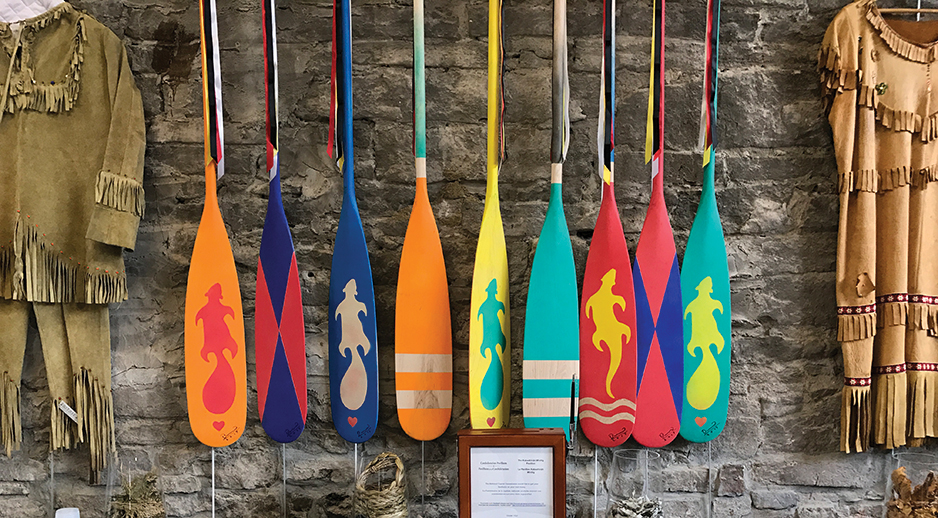Exhibit shows historical significance of Ottawa River
By Lauren Hicks
The Algonquins of Pikwakanagan First Nation have partnered with the National Capital Commission to present an exhibit showcasing local Indigenous people’s historical connection to the Ottawa River.
The exhibit, Kabeshinân Minitig, was co-produced as a Canada 150 project by the Omàmiwininì Pimàdjwowin— “The Algonquin Way Cultural Centre” at Pikwakanagan, located near Renfrew—and runs until Nov. 30 at a federal heritage building located on Victoria Island.
Although feedback from most visitors has been positive, building guide Josh Sarazin said the number of people visiting the exhibit has been fairly low.
Sarazin said the exhibit attracts about 25 visitors on a normal day but as many as 100 visitors during special events.
Chrystal Desilets, the site coordinator for the pavilion and a contract employee with the cultural centre, said she believes like the educational mandate for the pavilion was met this summer.
“(The exhibit) has begun to fulfill its mandate of First Nation education and it has been a place for learning in the community,” said Desilets. “For most visitors, it is their first time experiencing Ottawa’s Indigenous culture . . . A lot of guests get emotional.”
The rivers around Ottawa have historically acted as the Algonquin highways, making the region an important trading and gathering place for First Nations people. Victoria Island, the site of the pavilion today, has served as a sacred gathering place for the Algonquin Nation for millennia — a site for celebration, loss, and sharing.
“It is important to recognize the rich history of our capital,” said NCC spokesperson Cédric Pelletier. “We proudly partnered with the Algonquins of Pikwakanagan First Nation to create the pavilion — a place to discover the capital’s rich heritage during Canada’s sesquicentennial.”
The exhibit spans the entirety of the NCC’s open-plan pavilion, showcasing artifacts from the cultural centre and highlighting the talent of area Indigenous artists.
The cultural centre sources work by Algonquin and other Indigenous artists. Every Saturday from 1-4 p.m., the pavilion hosts a “Meet the Artist” event, where visitors can learn about specific cultural practices and techniques used by Indigenous artists.
“With reconciliation being a hot-button issue, the pavilion allows guests to gain context to the popular topic and hold our history in their hands, ” said Desilets.
The exhibit allows guests to touch and hold certain artifacts and explore the sacred gathering place of the Algonquin First Nation. All exhibit art is replaced every week, so repeat visitors have something new to see.
Among the many artifacts and culturally significant items on display at the pavilion is a birch bark canoe more than five metres long. The light-weight canoe created by Algonquin people amazed early European explorers due to its ability to travel in extremely shallow water.
“The exhibit is a fascinating and hands-on way to learn about local Indigenous history and culture,” said Isabelle Edgecombe Fontaine, 20, a frequent guest of the pavilion. “Ignorance on a topic like this should not be so mainstream.”
Desilets said she is confident the exhibit will return to the pavilion next summer, but final decisions will be made closer to December.
The Algonquin Way Cultural Centre is currently helping to organize other events to showcase local indigenous history and culture, such as the Chaudière Falls illumination show that is running until Nov. 5.

